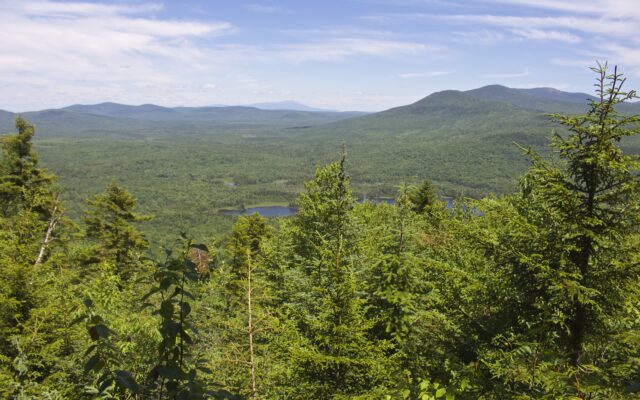
New gate more than doubles distance of popular Piscataquis County hike
By Julie Harris, Bangor Daily News Staff
Gates that block vehicle access to logging roads owned by Pine State Timber near Katahdin Iron Works have changed how people can get to a popular trail that goes to the peak of White Cap Mountain.
The White Brook Trail, owned by the Maine Appalachian Trail Land Trust, is a 3.3-mile stretch that provides relatively easy access to the mountain, according to Simon Rucker, Maine Appalachian Trail Land Trust executive director.
Until the gates were erected, hikers drove close to the trailhead and parked in a nearby gravel pit. With a gate blocking access, hikers must walk the 3.6 miles to the trailhead before hiking the 3.3 miles up White Cap Mountain, Rucker said.

MOUNTAIN VIEW — The Little Lyford Ponds and Gulf Hagas-White Cap Mountain Range is seen from Indian Mountain in July 2015 near Greenville.
It’s the latest ripple effect from gates the logging company erected a couple of weeks ago to keep non-logging vehicles off the roads. Moose hunters who had scouted the area the week before the hunt arrived to find the roads gated. The logging company said they hoped the gates would prevent any more theft and vandalism like what has occurred in that area over several months.
Access to land in that area is complicated, with easements between the Appalachian Trail Land Trust and the logging company, a corridor owned by the National Park Service and the involvement of the North Maine Woods, Rucker said.
The bottom line for hikers is that you can still use White Brook Trail to reach the summit of White Cap Mountain, the highest peak in the 100-Mile Woods, but you have to walk instead of drive to the trailhead.
There are other ways to reach the Appalachian Trail and White Cap too, Rucker said, although he didn’t elaborate.
It isn’t unusual for the land trust to have to deal with access issues because many trails use logging roads or other lands to get there, he said. The trust also has to work around washed out roads and bridges with the spring and summer rains.
He hoped people would continue to use the trail and would not be deterred by the extra distance.